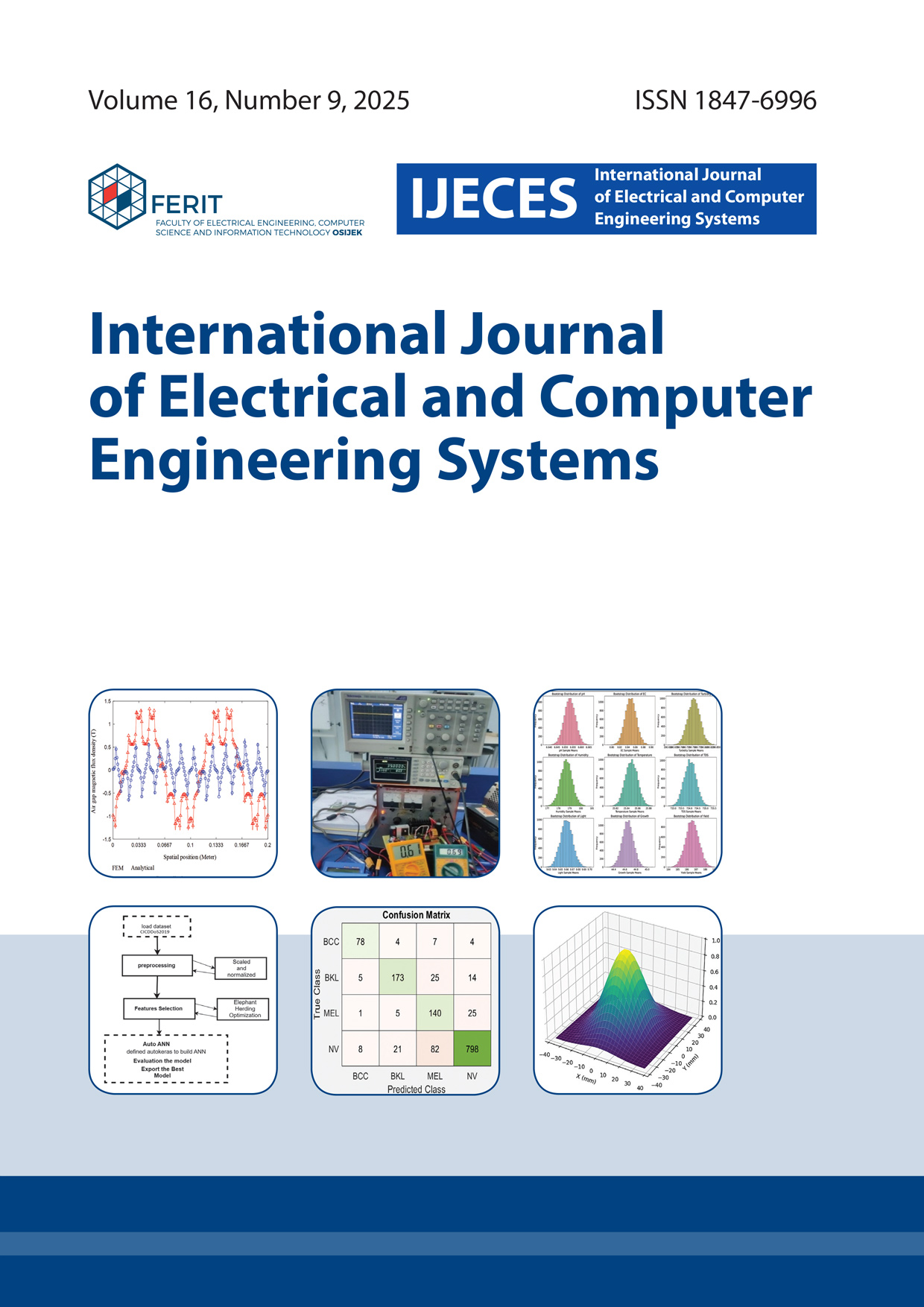Ensemble Deep Learning Approach For Multi- Class Skin Cancer Classification
DOI:
https://doi.org/10.32985/ijeces.16.9.6Keywords:
Skin Cancer, Deep Learning, CNN, Machine Learning, Artificial IntelligenceAbstract
Skin cancer is one of the most prevalent types of cancer, often caused by prolonged exposure to ultraviolet (UV) radiation, such as sunlight. This cancer is mainly categorized into benign and malignant lesions, where the latter could cause severe complications and even death. Traditional diagnostic methods, such as visual inspection and dermoscopy, often lack accuracy, while biopsy, though highly accurate, is invasive, time-consuming, and costly. This study aims to develop an automated deep learning model that leverages an ensemble of “Convolutional Neural Networks” (CNNs) to perform four-class classification of common skin lesions: Basal Cell Carcinoma (BCC), Benign Keratosis Lesion (BKL), Melanocytic Nevus (NV), and Melanoma (MEL). Seven widely used CNNs in medical imaging, GoogLeNet, InceptionV3, Xception, ResNet18, ResNet50, ResNet101, and DenseNet201, were evaluated for their performance in this classification task. The ISIC2018 and ISIC2019 datasets were employed, and data augmentation techniques were applied to address dataset imbalances. The analysis identified InceptionV3, Xception, and DenseNet201 as the top- performing networks. Therefore, they are utilized for the ensemble model. These networks were used as feature extractors, and their output features were combined and classified using a “Support Vector Machine” (SVM) algorithm. This approach demonstrates the potential of combining CNNs and SVM in an ensemble framework to enhance the accuracy and reliability of automated skin cancer classification. The proposed model achieved an accuracy of 94.46%, outperforming individual CNNs (93.27%) and existing ensemble methods such as Max Voting (94.12%) and hybrid models like DenseNet201 with Random Forest (91.28%).
Downloads
Published
How to Cite
Issue
Section
License
Copyright (c) 2025 International Journal of Electrical and Computer Engineering Systems

This work is licensed under a Creative Commons Attribution-NonCommercial-NoDerivatives 4.0 International License.


